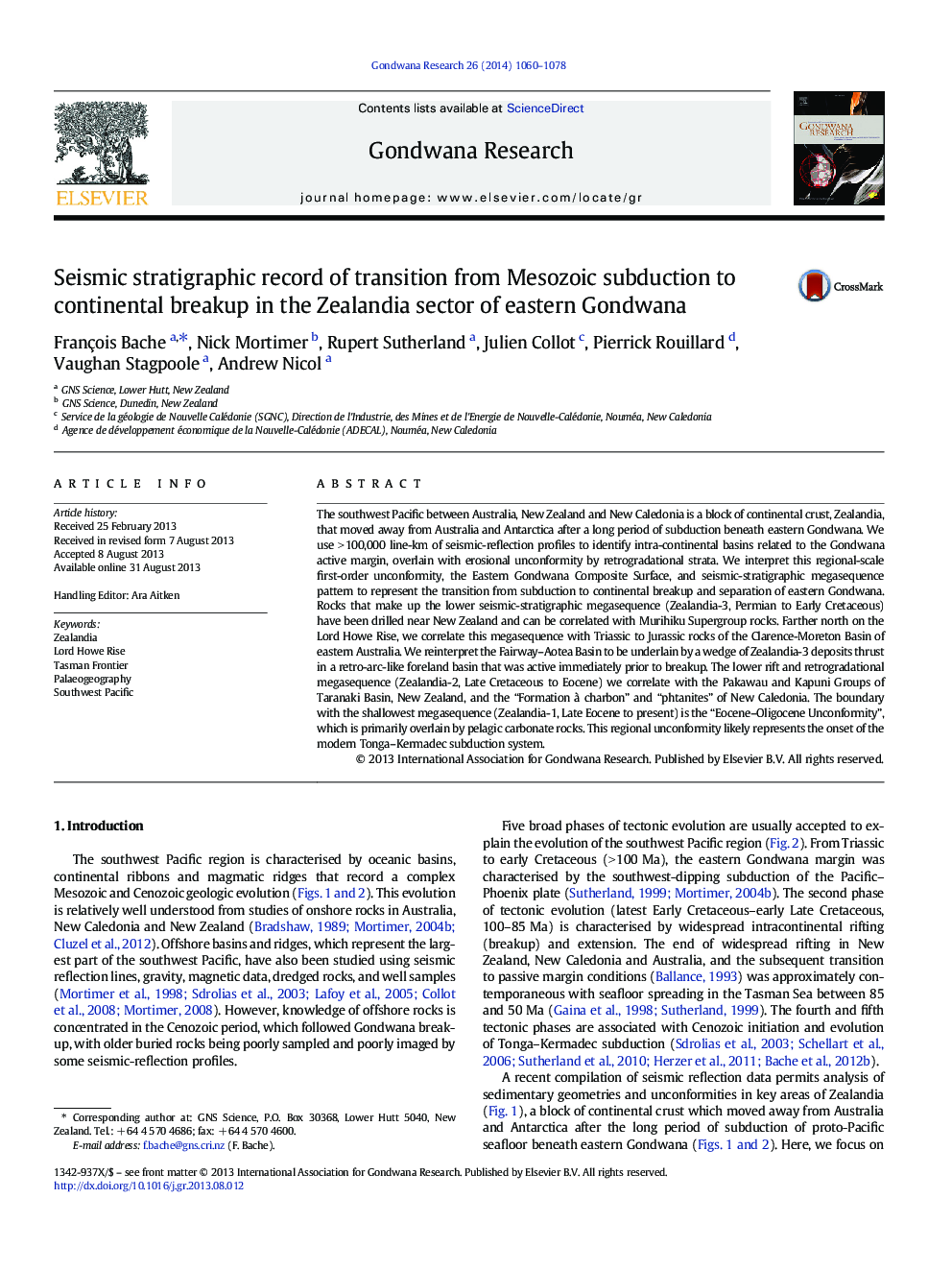| کد مقاله | کد نشریه | سال انتشار | مقاله انگلیسی | نسخه تمام متن |
|---|---|---|---|---|
| 4726840 | 1640142 | 2014 | 19 صفحه PDF | دانلود رایگان |
• We analyse sedimentary geometries in key areas of Zealandia.
• We detail the transition from Mesozoic subduction to breakup of eastern Gondwana.
• We interpret seismic-stratigraphic observations in terms of tectonic events.
• We reinterpret the Fairway-Aotea Basin as a retro-arc foreland basin.
• We propose a new regional seismic stratigraphic and lithostratigraphic framework.
The southwest Pacific between Australia, New Zealand and New Caledonia is a block of continental crust, Zealandia, that moved away from Australia and Antarctica after a long period of subduction beneath eastern Gondwana. We use > 100,000 line-km of seismic-reflection profiles to identify intra-continental basins related to the Gondwana active margin, overlain with erosional unconformity by retrogradational strata. We interpret this regional-scale first-order unconformity, the Eastern Gondwana Composite Surface, and seismic-stratigraphic megasequence pattern to represent the transition from subduction to continental breakup and separation of eastern Gondwana. Rocks that make up the lower seismic-stratigraphic megasequence (Zealandia-3, Permian to Early Cretaceous) have been drilled near New Zealand and can be correlated with Murihiku Supergroup rocks. Farther north on the Lord Howe Rise, we correlate this megasequence with Triassic to Jurassic rocks of the Clarence-Moreton Basin of eastern Australia. We reinterpret the Fairway–Aotea Basin to be underlain by a wedge of Zealandia-3 deposits thrust in a retro-arc-like foreland basin that was active immediately prior to breakup. The lower rift and retrogradational megasequence (Zealandia-2, Late Cretaceous to Eocene) we correlate with the Pakawau and Kapuni Groups of Taranaki Basin, New Zealand, and the “Formation à charbon” and “phtanites” of New Caledonia. The boundary with the shallowest megasequence (Zealandia-1, Late Eocene to present) is the “Eocene–Oligocene Unconformity”, which is primarily overlain by pelagic carbonate rocks. This regional unconformity likely represents the onset of the modern Tonga–Kermadec subduction system.
Figure optionsDownload as PowerPoint slide
Journal: Gondwana Research - Volume 26, Issues 3–4, November 2014, Pages 1060–1078
